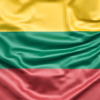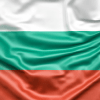About Bosnia and Herzegovina

Bosnia and Herzegovina, often referred to simply as Bosnia, is a Southeastern European country located on the Balkan Peninsula. It is known for its rich cultural heritage, diverse population, and breathtaking natural landscapes.
Square – 51,197 square kilometers;
Capital – Sarajevo;
National language – Bosnian, Croatian, and Serbian;
Currency – convertible mark (BAM) = 0.5 US Dollars.
Bosnia and Herzegovina’s historical significance, cultural diversity, and natural beauty make it a fascinating destination for travelers interested in exploring the rich tapestry of the Balkan region. From its picturesque landscapes to its resilient communities, the country continues to intrigue and inspire visitors from around the world.
Map

Bosnia and Herzegovina, located in the Balkans region of Southeastern Europe, is characterized by diverse and picturesque geography, encompassing mountainous landscapes, river valleys, and fertile plains. The country shares borders with Croatia to the north, west, and southwest, Serbia to the east, and Montenegro to the southeast. The Adriatic Sea coastline is situated to the south, near the city of Neum. The two entities within Bosnia and Herzegovina are the Federation of Bosnia and Herzegovina with the capital in Sarajevo, and the Republika Srpska, while the BrÄko District represents a self-governing administrative unit under the sovereignty of both entities.Â
Language
Bosnia and Herzegovina is characterized by a rich linguistic landscape that reflects its diverse cultural heritage and historical influences. The official languages of Bosnia and Herzegovina are Bosnian, Croatian, and Serbian, all standardized forms of the Serbo-Croatian language. The mentioned languages share a considerable degree of mutual intelligibility and are spoken by different ethnic communities within the country, including Bosniaks, Croats, and Serbs. The linguistic diversity of Bosnia and Herzegovina serves as a testament to the country’s multicultural identity and the coexistence of various ethnic groups, each contributing to the linguistic tapestry of the nation.
CultureÂ
The culture of Bosnia and Herzegovina is a vibrant tapestry of diverse traditions, rich heritage, and a blend of Eastern and Western influences that have shaped the country’s unique cultural identity. Located at the crossroads of Eastern and Western civilizations, Bosnia and Herzegovina is characterized by its rich history, multifaceted cultural expressions, and a deep sense of communal identity that reflects the coexistence of various ethnic and religious communities within the country. Bosnia and Herzegovina`s cultural heritage, manifested through its art, architecture, music, cuisine, and traditional arts, serves as a testament to Bosnia and Herzegovina’s resilience, creativity, and enduring spirit, underscoring its commitment to preserving its cultural legacy and celebrating the rich tapestry of its multifaceted identity.
ClimateÂ
The climate of Bosnia and Herzegovina is characterized by its diverse geographical features, which give rise to varying climatic conditions across different regions of the country. Located in Southeastern Europe on the Balkan Peninsula, Bosnia and Herzegovina exhibits a transitional climate influenced by its proximity to the Adriatic Sea, its elevation variations, and the surrounding mountainous terrain. The country’s climate is shaped by a combination of Mediterranean, Continental, and Alpine climatic influences, resulting in distinct seasonal variations, temperature fluctuations, and precipitation patterns that contribute to the country’s meteorological diversity and natural beauty.
EconomyÂ
Bosnia and Herzegovina’s economy is characterized by a dynamic mix of industries, services, and agricultural activities that contribute to the country’s economic resilience, regional competitiveness, and global integration. Bosnia and Herzegovina can strengthen its economic foundations, foster inclusive growth, and build a prosperous future for all its citizens. Bosnia and Herzegovina’s economic partnerships with the European Union, Germany, Turkey, Austria, the United States, and international financial institutions have played a vital role in shaping the country’s economic landscape, fostering regional cooperation, and promoting sustainable development initiatives that contribute to the country’s economic resilience, social stability, and global integration.
PopulationÂ
Bosnia and Herzegovina had an estimated population of approximately 3.3 million people. The country’s population comprises diverse ethnic groups, with Bosniaks, Croats, and Serbs forming the three main constituent ethnic communities in the country. Bosniaks constitute the largest ethnic group, representing a significant portion of the population and contributing to the cultural, religious, and linguistic diversity of the nation. Croats and Serbs are the other prominent ethnic groups, each with their distinct cultural traditions, linguistic heritage, and historical significance within the country. Bosnia and Herzegovina is also home to various minority communities, including Roma, Jews, and other ethnic groups that contribute to the country’s rich ethnic tapestry and social cohesion.
Transportation
Transportation in Bosnia and Herzegovina is characterized by a network of roads, railways, air travel, and waterways that facilitate the movement of people, goods, and services within the country and across its borders. The road infrastructure comprises national highways, regional roads, and local thoroughfares that support the country’s domestic trade, tourism industry, and interregional connectivity. The development of modern highways, including the A1 and A2 motorways, has significantly improved the efficiency of road transportation, reduced travel time, and enhanced the accessibility of remote areas, fostering economic development and social integration within the country. The country’s railway infrastructure includes a network of railways that connect major cities such as Sarajevo, Banja Luka, and Tuzla, contributing to the efficient movement of goods, commodities, and industrial products across the region.


















